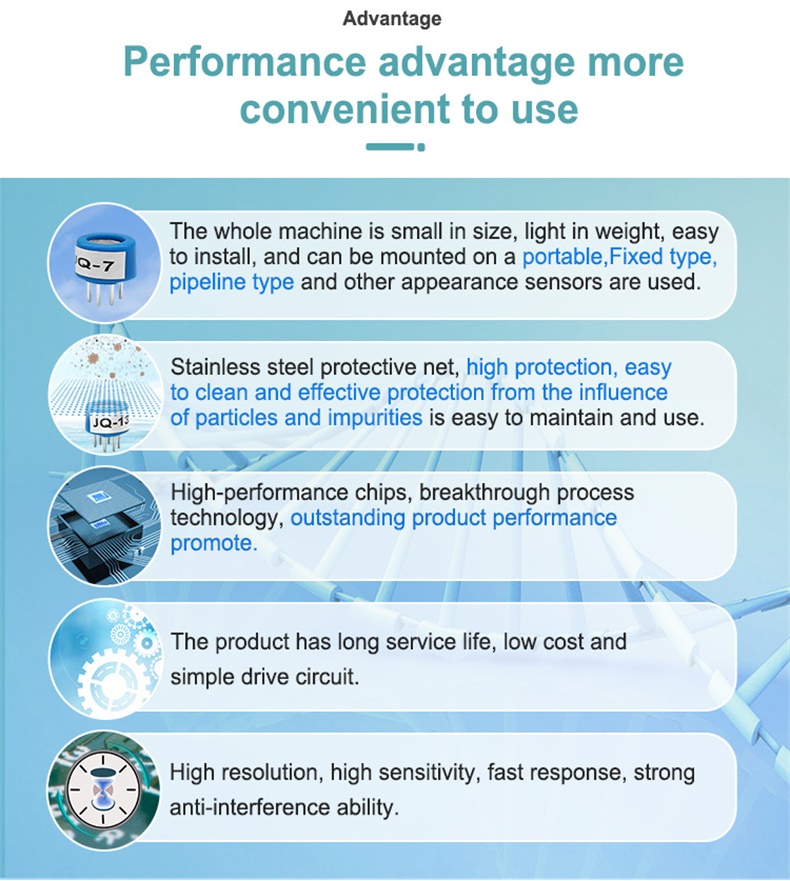Gas sensors are important tools that play a crucial role in environmental monitoring. They are designed to detect and measure the concentration of various gases in the air, including but not limited to carbon dioxide, carbon monoxide, nitrogen dioxide, sulfur dioxide, methane, and ozone. There have been significant advancements in gas sensor technology in recent years, resulting in more accurate and reliable sensors that can provide real-time data on air quality. In this article, we will discuss the latest advancements in gas sensor technology and their applications in environmental monitoring.
Advancements in Gas Sensor Technology
One of the most significant advancements in gas sensor technology is the use of nanomaterials in sensor design. Nanomaterials are materials with dimensions between 1 to 100 nanometers, and they exhibit unique properties compared to their bulk counterparts due to their high surface area-to-volume ratio. Nanomaterials such as metal oxide nanoparticles, carbon nanotubes, graphene, and nanowires are being used to enhance gas sensor performance. For instance, metal oxide nanoparticles, such as titanium dioxide, zinc oxide, and tin oxide, have been found to increase the sensitivity and selectivity of gas sensors, making them suitable for detecting low concentrations of toxic gases.
Another advancement is the use of optical gas sensors. Optical gas sensors work by measuring changes in light absorption or emission caused by the presence of a gas. These sensors have several advantages over traditional electrochemical sensors, including faster response times, higher accuracy, and better selectivity. They are also less susceptible to interference from other gases and can operate in harsh environments. Researchers are currently exploring the use of photonic crystal structures, surface plasmon resonance, and fiber optic sensors in optical gas sensors.
The Internet of Things (IoT) has also contributed to the development of gas sensors. IoT refers to the interconnectivity of physical devices, sensors, and systems through the internet. In the context of gas sensors, IoT allows for real-time monitoring and data collection of air quality, making it easier to track changes in gas concentrations and respond quickly to potential environmental hazards. Gas sensors equipped with IoT technology can be linked to central monitoring systems, alerting authorities when gas concentrations exceed safe limits.
Applications of Gas Sensors in Environmental Monitoring
Gas sensors have numerous applications in environmental monitoring, including:
Air quality monitoring: Gas sensors are used to measure the concentration of pollutants in the air, helping authorities to identify areas with poor air quality and take measures to improve it.
Industrial emissions monitoring: Gas sensors are used to monitor the emissions of industrial facilities and ensure compliance with environmental regulations.
Indoor air quality monitoring: Gas sensors are used to detect harmful gases in indoor environments such as homes, offices, and schools.
Agricultural monitoring: Gas sensors are used to measure the concentration of gases emitted by crops and livestock, ensuring that they are not exposed to harmful levels of pollutants.
Disaster response: Gas sensors are used to detect gas leaks and other hazardous gases in disaster response scenarios, allowing first responders to take necessary precautions and mitigate potential dangers.
Conclusion
In conclusion, gas sensors continue to play a crucial role in environmental monitoring. The advancements in gas sensor technology have led to more accurate, reliable, and efficient sensors that provide real-time data on air quality. Gas sensors have numerous applications in various fields, including air quality monitoring, industrial emissions monitoring, indoor air quality monitoring, agricultural monitoring, and disaster response. As we continue to face environmental challenges, gas sensors will be essential in mitigating the negative impacts of air pollution.
 : +86 155 8830 2704
: +86 155 8830 2704 : jxdziot@gmail.com
: jxdziot@gmail.com
